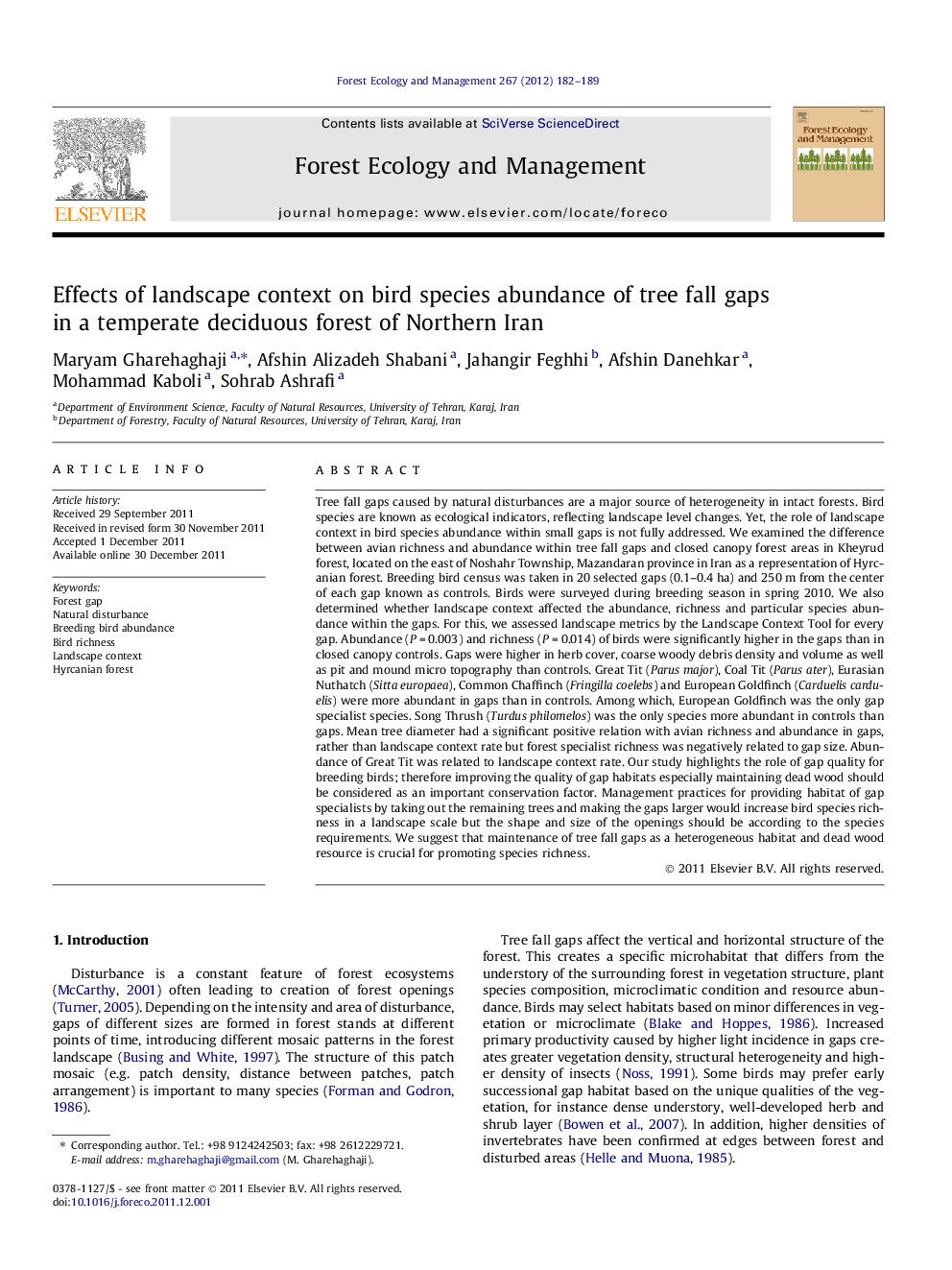| کد مقاله | کد نشریه | سال انتشار | مقاله انگلیسی | نسخه تمام متن |
|---|---|---|---|---|
| 87623 | 159258 | 2012 | 8 صفحه PDF | دانلود رایگان |

Tree fall gaps caused by natural disturbances are a major source of heterogeneity in intact forests. Bird species are known as ecological indicators, reflecting landscape level changes. Yet, the role of landscape context in bird species abundance within small gaps is not fully addressed. We examined the difference between avian richness and abundance within tree fall gaps and closed canopy forest areas in Kheyrud forest, located on the east of Noshahr Township, Mazandaran province in Iran as a representation of Hyrcanian forest. Breeding bird census was taken in 20 selected gaps (0.1–0.4 ha) and 250 m from the center of each gap known as controls. Birds were surveyed during breeding season in spring 2010. We also determined whether landscape context affected the abundance, richness and particular species abundance within the gaps. For this, we assessed landscape metrics by the Landscape Context Tool for every gap. Abundance (P = 0.003) and richness (P = 0.014) of birds were significantly higher in the gaps than in closed canopy controls. Gaps were higher in herb cover, coarse woody debris density and volume as well as pit and mound micro topography than controls. Great Tit (Parus major), Coal Tit (Parus ater), Eurasian Nuthatch (Sitta europaea), Common Chaffinch (Fringilla coelebs) and European Goldfinch (Carduelis carduelis) were more abundant in gaps than in controls. Among which, European Goldfinch was the only gap specialist species. Song Thrush (Turdus philomelos) was the only species more abundant in controls than gaps. Mean tree diameter had a significant positive relation with avian richness and abundance in gaps, rather than landscape context rate but forest specialist richness was negatively related to gap size. Abundance of Great Tit was related to landscape context rate. Our study highlights the role of gap quality for breeding birds; therefore improving the quality of gap habitats especially maintaining dead wood should be considered as an important conservation factor. Management practices for providing habitat of gap specialists by taking out the remaining trees and making the gaps larger would increase bird species richness in a landscape scale but the shape and size of the openings should be according to the species requirements. We suggest that maintenance of tree fall gaps as a heterogeneous habitat and dead wood resource is crucial for promoting species richness.
► We compared the abundance and richness of birds within gaps and forest controls.
► Relation between the abundance of particular birds and landscape variables in gaps was examined.
► Abundance and richness of birds were higher in gaps than controls.
► The abundance of Great Tit was related to landscape context.
Journal: Forest Ecology and Management - Volume 267, 1 March 2012, Pages 182–189